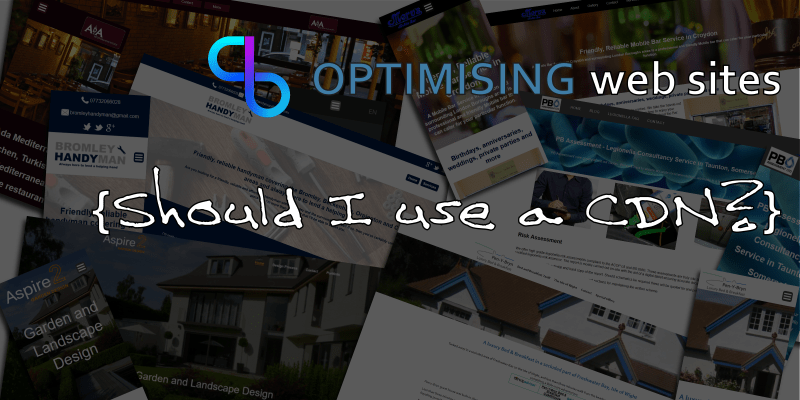क्या मुझे सामग्री वितरण नेटवर्क का उपयोग करना चाहिए?

The use of a Content Delivery Network or CDN for short is commonplace among larger corporate websites who get many thousands of requests every day, but if you are a newer developer, or business owner who has created your own site, you may not know what one is.
You may also have run a speed test and been told by a report that you need to use one, but it isn’t always necessarily true.
Unfortunately this will get a little bit technical…
You have a shiny new website, and traffic has been consistently growing, to the point that perhaps people are buying your goods internationally. You only started off with a hosting company based in the country you started off selling in, say the UK for example.
But you now have new customers in the USA, and they say your site is too slow. You run a check and it all looks good.
You are being slowed down by what is called latency, the process of sending data from one user to another. There is only a relatively small amount of bandwidth (the volume of data) that can be sent along the internet backbone), and this has to be shared by everyone using it.
A CDN is a way of pushing your content closer to the end user, and there are many services available, Amazon, Google and Microsoft amongst others all provide a service.
They store copies of your content, or assets (images, scripts etc) on many servers located around the world, meaning that the browser your reader is coming from only has to get a short distance to get the relevant items.
So Steve in Seattle’s browser only has to go to the nearest server potentially located within a few miles and it is a lot quicker than going from there to London.
Say your site went viral because someone shared a brilliant piece of content or product, it would take the strain off of your main server in servicing the number of requests.
There are numerous ways to set these up, each with various benefits and drawbacks, so feel free to get in touch if you want a no obligation chat on whether it would be worth setting one up, or help in choosing a provider.
So should I use one?
Ok, ok, maybe this isn’t what everyone else says, but we don’t think you should always use a CDN… In some instances you may want to server all of the items yourself.
- High security items, like banking or healthcare
- Desktop based application that may not always have access to the internet
- In a country that potentially may block domains or ip addresses
What about low volume or local sites?
The line can get a bit blurry when creating a site that has relatively few users or users only in a localised geographical area where your server is based. We all hope that our site will get hundreds of thousands of users, but in reality very few make it that big.
In some instances a CDN could actually slow down the page load time, if an item isn’t requested often enough it may get removed from the CDN to save space, so will need to be requested from your own server again.
It also saves on the potential complexities that a come from designing a site with a CDN, or that writing content to use CDN images can entail.
I have a high volume site?
There will definitely be a speed advantage to higher volume sites with pressure taken off of your main server.
It is also a good idea to use one if you plan to use images, videos or other very large files.
You should also get a cost benefit here, as CDN’s servers mainly serve static files they can be designed in a more cost effective manner by giant global companies, using infrastructure that is shared by millions, the cost of each request is far cheaper than overloading your main server.
Speed matters
Ultimately your end goal should be to provide the best user experience possible, and page speed is a major factor in achieving this. A faster site will get recognised by search engines and forms a part of how far up the rankings you will get.
Happy customers are also more likely to recommend your product or service with a quicker site.